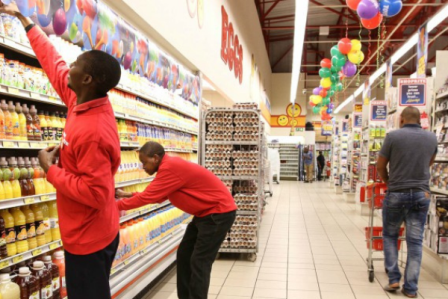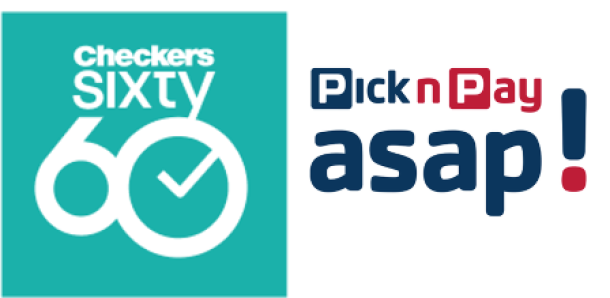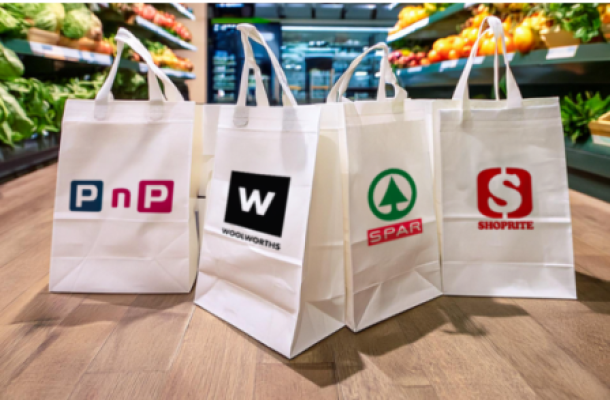
How much money cashiers, trolley collectors, and other retail workers are paid in South Africa
Employment and Labour Minister Thulas Nxesi gazetted the new sectoral determinations for workers in South Africa’s wholesale and retail sectors in the first quarter of the year, which reveals the minimum baseline wage for workers in the sector for the year.
The changes took effect from 1 March 2023, alongside recent changes to South Africa’s minimum wage. The latest increase, announced in February, saw the national minimum wage hiked by 9.6%, bringing it up to R25.42 per hour.
These wages establish the minimum baseline across the sector, and workers can earn significantly more based on their position and the company that they work for. Workers are also paid in accordance with what part of South Africa they are based in.
|
Designation |
Area Covered |
|
Area A |
Areas around Bergrivier, Breede Valley, Buffalo City, Cape Agulhas, Cederberg, City of Cape Town, City of Johannesburg Metropolitan Municipality, City of Tshwane, Drakenstein, Ekurhuleni, Emalahleni, Emfuleni, Ethekwini Metropolitan Unicity, Gamagara, George, Hibiscus Coast, Karoo Hoogland, Kgatelopele, //Khara Hais, Knysna, Kungwini, Kouga, Hessequa local authority, Lesedi, Makana, Mangaung, Matzikama, Metsimaholo, Middelburg (Mpumalanga), Midvaal, Mngeni, Mogale, Mosselbaai, Msunduzi, Mtubatuba, Nama Khoi, Nelson Mandela, Nokeng tsa Taemane, Oudtshoorn, Overstrand, Plettenbergbaai, Potchefstroom, Randfontein, Richtersveld, Saldanha Bay, Sol Plaatjie, Stellenbosch, Swartland, Swellendam, Theewaterskloof, Umdoni, uMhlathuze and Witzenberg. |
|
Area B |
All Areas not listed in Area A. |
The below table shows the monthly wages for workers in both Area A and Area B:
|
Job catagory |
Area A |
Area B |
|
General Assistant/Trolley collector |
R4 956.52 |
R4 956.52 |
|
Security guard |
R4 956.52 |
R4 956.52 |
|
Forklift operator |
R4 956.52 |
R4 956.52 |
|
Merchandiser/Shop Assistant/Checker/Deli Assistant |
R4 956.52 |
R4 956.52 |
|
Cashier |
R5 483.98 |
R4 956.52 |
|
Displayer |
R6 699.68 |
R5 498.58 |
|
Supervisor |
R7 937.84 |
R6 900.52 |
|
Trainee Manager |
R8 573.49 |
R7 376.28 |
|
Assistant Manager |
R9 331.98 |
R8 125.02 |
|
Manager |
R10 234.76 |
R8 811.37 |
While supermarkets remain some of the largest employers in South Africa, there is a growing gap between the highest and lowest-paid workers.
To remedy this, retail groups have announced initiatives to close the wage gap, while the government plans to introduce new legislation to force South African companies to report pay differences between executives and workers.
This included Woolworths, which first detailed its ‘Just Wage’ initiative in 2019, which saw it steadily increase worker wages over the years as part of a move to close its remuneration gap.
A commitment of R120 million was made at the time to close the gap between salary differentials and drive economic inclusion for more than 20,000 store employees.
The ‘Just Wage’ was also a deliberate intent to move away from paying the minimum legislative wage requirements to a wage that would go some way to a living wage.
We, therefore, agreed that Woolworths’ hourly rate would exceed South Africa’s minimum wage and the Retail sectoral wage determination. South Africa’s current minimum wage is R25.42 and R33.10 for the Retail sector (comparable jobs to WSA).
Our ‘Just Wage’ of R40 exceeds the minimum and sector wages by 57.4% and 20.8%, respectively. This has increased even further, as of 1 October 2023, to an hourly rate of R41.25 – representing a cumulative increase of 35.2%.
If the lowest-paid Woolworths worker takes home a minimum of R41.25 an hour and works eight hours a day at an average of 22 days a month, they would earn R7,260 a month or R87,120 a year as of October.
Average South African employees’ guaranteed pay increases ranged from 5% to 6.5%. The ‘Just Wage’ percentage increases have far exceeded those of executive directors and management, and in the 2021 financial year, when management salaries were kept at the same level paid in 2020, the ‘Just Wage’ still increased by 9.4%.
News Category
- International retailers
- On the move
- Awards and achievements
- Legislation
- Wine and liquor
- Africa
- Going green
- Supplier news
- Research tools
- Retailer trading results
- Supply chain
- Innovation and technology
- Economic factors
- Crime and security
- Store Openings
- Marketing and Promotions
- Social Responsibility
- Brand Press Office
Related Articles

Checkers Sixty60 wipes floor with Pick n Pay As...

Top tips for consumers to combat escalating ele...

Clear winner in South African retail battle

Drinks survey reveals Rooibos as a top choice a...


